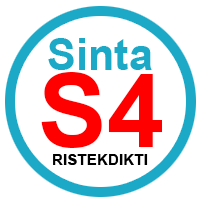Analisa Potensi Tempat Ibadah Untuk Pemberdayaan Ekonomi Masyarakat
Abstract
One of the big problems facing the Indonesian nation at this time is the problem of poverty and poverty. One of the solutions to prevent and at the same time overcome poverty is the development of a people's economy that is fair and equitable based on prosperity, which is far from capitalism and socialism but respects ownership of individual rights and at the same time maintains shared ownership. The purpose of this research is to find answers about the potential for the existence of places of worship in empowering the community's economy. The method used in this study is a descriptive qualitative method with a content analysis approach and library research to find out the conclusions from a text, journal or literature and research results or data sources that have been collected. The results obtained are that places of worship consisting of mosques, churches, monasteries, temples and temples have great potential in empowering the economy of their people. The economic empowerment of the people from each place of worship will have implications for the economic empowerment of the community around the place of worship as well so that by moving the community's economic empowerment, the wheels of the economy will spin more broadly and this moving economy will have a positive influence on the income of the place of worship, especially the community as a whole. general and ultimately the economy as a whole, so that this will prevent poverty.
References
Boniran, Kabul Pratiyono, Suparman, Lamirin. (2022). “Pemanfaatan Sumber Daya Alam Untuk Budidaya Ternak Kambing Di Vihara Sakyamurti Panggung Asri, Desa Margorejo, Kecamatan Tigeneneng, Kabupaten Pesawaran Lampung Boniran,.” Jurnal Pengabdian Kepada Masyarakat Bodhi Dharma 1(2):91–104.
BPS. (2022). Prosesntase Penduduk Miskin. Jakarta.
Dkk, Rispatiningsih. (2022). “Peningkatan Ekonomi Masyarakat Buddha Melalui Pendidikan Kewirausahaan Minuman Jahe Kelor Pada Umat Buddha Di Desa Tunahan Kecamatan Keling Kabupaten Jepara Jawa Tengah.” Jurnal Pengabdian Kepada Masyarakat 1(11):2975–82.
Firdaus, Muhammad, Irfan Syauqi Beik, Tony Irawan, and Bambang Juanda. (2015). “Economic Estimation and Determinations of Zakat Potential in Indonesia Muhammad Firdaus , Irfan Syauqi Beik , Tonny Irawan , Bambang.” (October 2012).
Giri, IPAA, I. M. Girinata, and ... (2022). “Upacara Piodalan Sebagai Media Pendidikan Sosial Religius-Ekonomi (Kajian Fenomenologi).” Sphatika: Jurnal … 13(2):175–85.
Gischa, Serafica. (2021). “Fungsi Dan Kegunaan Tempat Ibadah.” Compas.Com.
Gupta, Sanjeev, Hamid Davoodi, and Erwin Tiongson. (2000). “IMF Working Paper Corruption and the Provision of Health Care and Education Services INTERNATIONAL MONETARY FUND.”
Hermansah, Tantan. (2019). “Menberdayakan Masyarakat Dengan Mengaplikasikan Pendekatan Transofrmasi-Komunitas-Institusionalisasi.” Https://Repository.Uinjkt.Ac.Id/ 20–21.
Indonesia, Republik. (2005). “Peraturan Pemerintah Republik Indonesia Nomor 36 Tahun 2005 Tentang Pelaksanaan Undang-Undang No.28 Tahun 2002 Tentang Bangunan Gedung.” (2).
Kamaruddin. (2013). “Analisis Potensi Pemberdayaan Ekonomi Masyarakat Berbasis Masjid Di Kota Banda Aceh.” Jurnal Ilmiah ISLAM FUTURA 13(1):58–70.
Kemendiknas. (2008). Kamus Besar Bahasa Indonesia. (Jakarta: Pusat Bahasa Departemen Pendidikan Nasional.
Kurnia, Tuti, and Wildan Munawar. (2018). “Strategi Pengembangan Peran Masjid Di Kota Bogor.” 4:62–81.
Moh. Nazir. (2014). “Metode Penelitian.” Metode Penelitian. doi: 978-979-450-173-5.
Monavia Ayu Rizaty. (2022). Artikel Ini Telah Tayang Di Dataindonesia.Id Dengan Judul “BPS: Jumlah Penduduk Indonesia Sebanyak 275,77 Juta Pada 2022”.,.
Muhamad. (2019). Sejarah Pemikiran Ekonomi Islam. Yogyakarta: UII Press.
Muharawati, Yuliana dkk. (2018). “Strategi Masjid Dalam Pemberdayaan Ekonomi Umat Pada Masjid Assalam Karang Tengah Dan Masjid Nurul Huda.” Jurnal UMMI 21–36.
Nasional, Pusat Bahasa Departemen Pendidikan. (2008). Kamus Bahasa Indonesia. Jakarta.
Republika.co.id. (2020). Penguatan Ekonomi Umat. Jakarta.
Rifai. (2019). “Peranan Koperasi Dalam Membangun Kemandirian Ekonomi Warga Gereja : Studi Kiprah Koperasi Serba Usaha ( KSU ) Lidia Di.” 3(1):1–8.
Saputro, Emon dan Dian Agustina. (2021). “Peran Institusi Masjid Dalam Pembangunan Ekonomi Lokal: Studi Kasus Pada Masjid Jogokariyan Yogyakarta.” JIEFeS 2(2):174–95.
Suharto, Edi. (2011). Kebijakan Sosial. Bandung: ALFABETA.
Suhendra, K. n.d. Peran Birokrasi Dalam Pemberdayaan Masyarakat. Bandung: ALFABETA.

This work is licensed under a Creative Commons Attribution-NonCommercial 4.0 International License.







